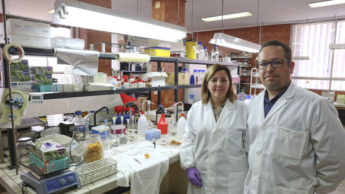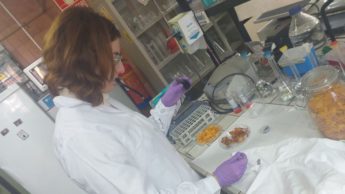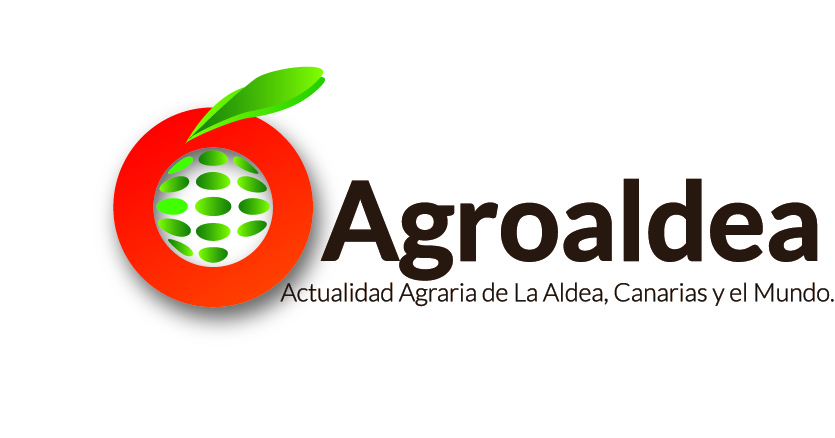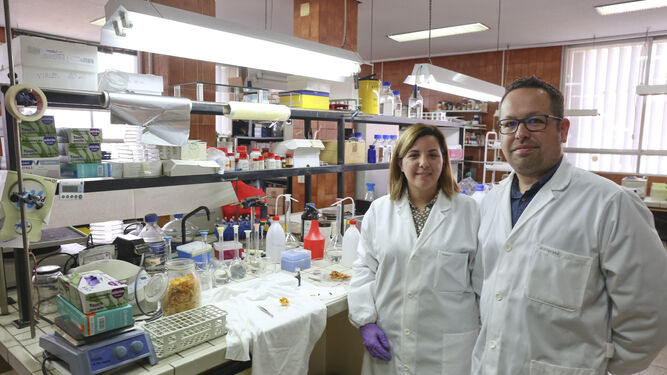 A group of researchers at the University of Malaga studies the multiple uses of the 'cutin’ of tomato as bioplastic.
A group of researchers at the University of Malaga studies the multiple uses of the 'cutin’ of tomato as bioplastic.
Of tomato we know that is rich in vitamins and minerals, which protects the hearing and blood circulation. Now we know that this fruit You can become the bioplastic future.
A group of researchers from the University of Malaga has been working with the skin of the tomato, also called 'cutin'. Alejandro Heredia, one of those responsible for the study, He explains that it is "natural packaging perfect". Protects the inside temperature changes, moisture and insects. But, In addition, repels water and does not miss it contains.
Spain is one of the leading producers of tomato in Europe. It is also very high demand for its derivatives such as sauces, soups and juices. However, skin can not be used as an additive because it has no nutritional value and is difficult to digest. "It is the most abundant residue", explains Heredia.
Canning industry discards it. Only a fraction is used as feed, the rest burns, generating CO2 pollution and a cost for the company. ES, Therefore, "Industrial waste that account for tons" and that these researchers used to make packaging. A clear example of what is known as a "circular economy".
totally ecological process
It is a chemical and sustainable process. Is about break the skin of the tomato to return to redo it and give it the shape desired, by heat. A more technical way: by chemical treatment, the monomers are obtained from the substance, i.e., "Basic link in the chain that forms the polymer". Once a dissolved, It is given the desired shape and heat is applied (around 150 degrees). Thus, "It polymerizes again and get bioplastic".

To this it is added "in the process, no organic solvents are used and the only byproduct is water generated ", adds Heredia, which it makes it not only environmentally friendly and non-toxic, but cheaper.
There are multiple uses of this bioplastic. Since the trays to contain fruits or vegetables that flood supermarket, up utensils like spoons. Against the 500 years take a plastic bottle, for example, decompose in the ocean, this material would in just one week. A perfect solution to reduce the huge amount of plastic is at the level and, currently, reaches 359 millions of tons a year.
Wifi antenna or a shirt that generates electricity
One of the great advantages of the tomato skin is compatible with any material that is added. Thus, researchers have joined the graphene. Lightweight material, resistant and electrically conductive they have created, nothing less, an antenna wifi. "We have copied the shape of a normal antenna, which it is a metal part, and as it has electrical properties, we have managed to replicate but completely biodegradable ", explains Heredia.
Researchers have also designed, from tomato skin, a T 'low cost' capable of producing electricity by temperature difference of the body and the environment.
The formula is very simple: water and ethanol a type alcohol ecological-, derived from the tomato skin and carbon nanoparticles. A solution, according to experts, to warming, penetrates and adheres to the cotton, thereby achieving electrical properties such as generating tellurium, germanium or lead, but from biodegradable materials. Thus, to walking or running, if a person wearing the garment, could produce electricity.
 "Until now, for creating electronic devices were metals commonly used chemical elements. With this project we step further and, using lightweight materials, more affordable and less toxic, We have also succeeded in generating electricity ", explains Heredia.
"Until now, for creating electronic devices were metals commonly used chemical elements. With this project we step further and, using lightweight materials, more affordable and less toxic, We have also succeeded in generating electricity ", explains Heredia.
"He plastic polymer has invaded our lives, It contains everything and we're in a maelstrom of difficult exit, because it is very effective and very cheap, It was a success tremendous chemistry ", points Antonio Heredia. The downside is that a plastic bottle can take over 450 years to biodegrade. "The climate crisis is unstoppable and stakes our Western way of life", adds Professor.
Although not have sufficient amount of tomato skin to produce the plastic is needed now, "is about make little progress, go slowly replacing ", Susana says Guzman.
Add paper or algondón, the perfect mix
 The next step for the researchers was adding cellulose polymer, resistance thus merged and mechanical properties of paper with the hydrophobicity of the tomato skin. This creates a new material equal Degradable, waterproof, strong and you need much less quantity of raw material.
The next step for the researchers was adding cellulose polymer, resistance thus merged and mechanical properties of paper with the hydrophobicity of the tomato skin. This creates a new material equal Degradable, waterproof, strong and you need much less quantity of raw material.
"The process remains completely sustainable, we nailed, saw that it could be used as a coating for food cans because it equalizes the properties of chemical resins avoiding bifenol A and, Therefore, not released estrogens”, researchers say.
The future of the tomato is yet to be written.

